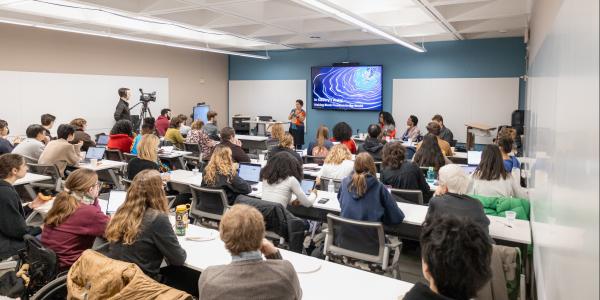
"What can we remember that will surround us in oceans of history and potential? And how?” - Alexis Pauline Gumbs.
On Wednesday, February 26, a group of educators and curators came together at the University of Pittsburgh to participate in the panel discussion, Slavery, Museums, and Public Engagement.
The panel included:
Keila Grinberg, History Professor and Director of the Center for Latin American Studies at the University of Pittsburgh, and Co-Curator of In Slavery’s wake at the National Museum of African American History and Culture.
Johanna Obenda, Researcher and Exhibit Development Specialist, Smithsonian National Museum of African American History and Culture (NMAAHC).
Kiolo Luckett, Executive Director and Chief Curator, Alma | Lewis.
Jason Hank, Educator, Beaver Area High School.
The afternoon began with a series of presentations from the panel participants. Johanna Obenda, Researcher and Exhibit Development Specialist at Smithsonian’s NMAAHC, presented to dozens of people in the audience, discussing the ideation behind the exhibit In Slavery’s Wake - an immersive exhibit that explores the histories of racial slavery and colonialism.
The exhibit, once a dream of curators for almost a decade, is now brought to life and making a global impact as the NMAAHC’s first international traveling exhibition - which will take over 300 pieces made up of objects, images, and interactive media to places including Belgium, Brazil, Senegal, and South Africa.
“This project moved organically,” said Obenda. The exhibition works with the overall mission of the NMAAHC, as the focus of the exhibit features such a critical time in African American history. Though, when there is so much depth to explore in this history, how is it determined which stories to include - and which to leave out? It is a complicated process to share stories, especially when there are so many connected to one subject. Obenda details an approach to create “Vignettes,” or capture brief moments in time, and to “Engage across geographies,” to include multiple audiences in which the exhibition can resonate with.
Following the presentations, the audience had the opportunity to participate in a Q&A session with the panel. This portion of the event allowed attendees to engage in thought-provoking discussions and learn more about history that has lasting impacts to this day.

